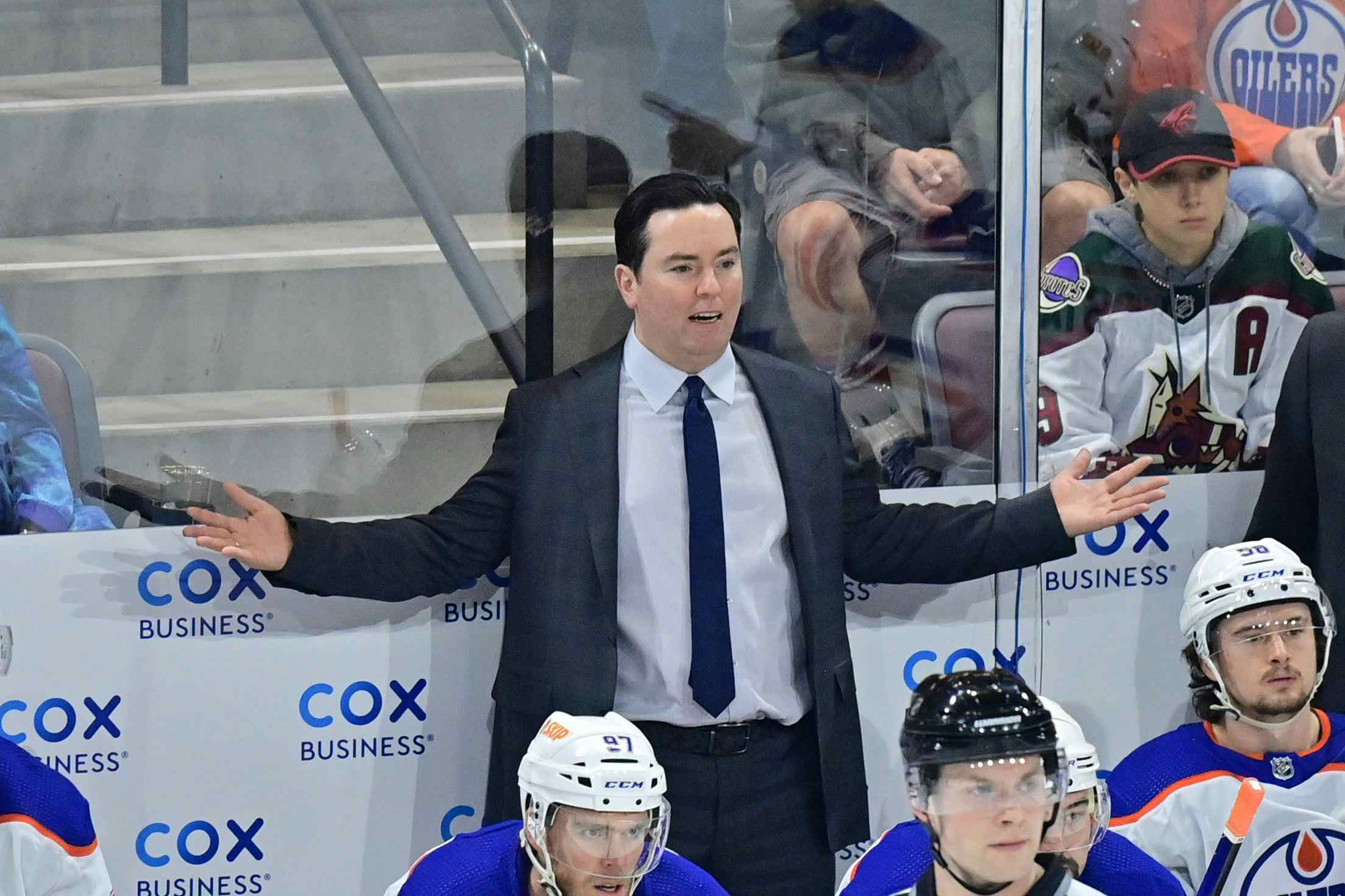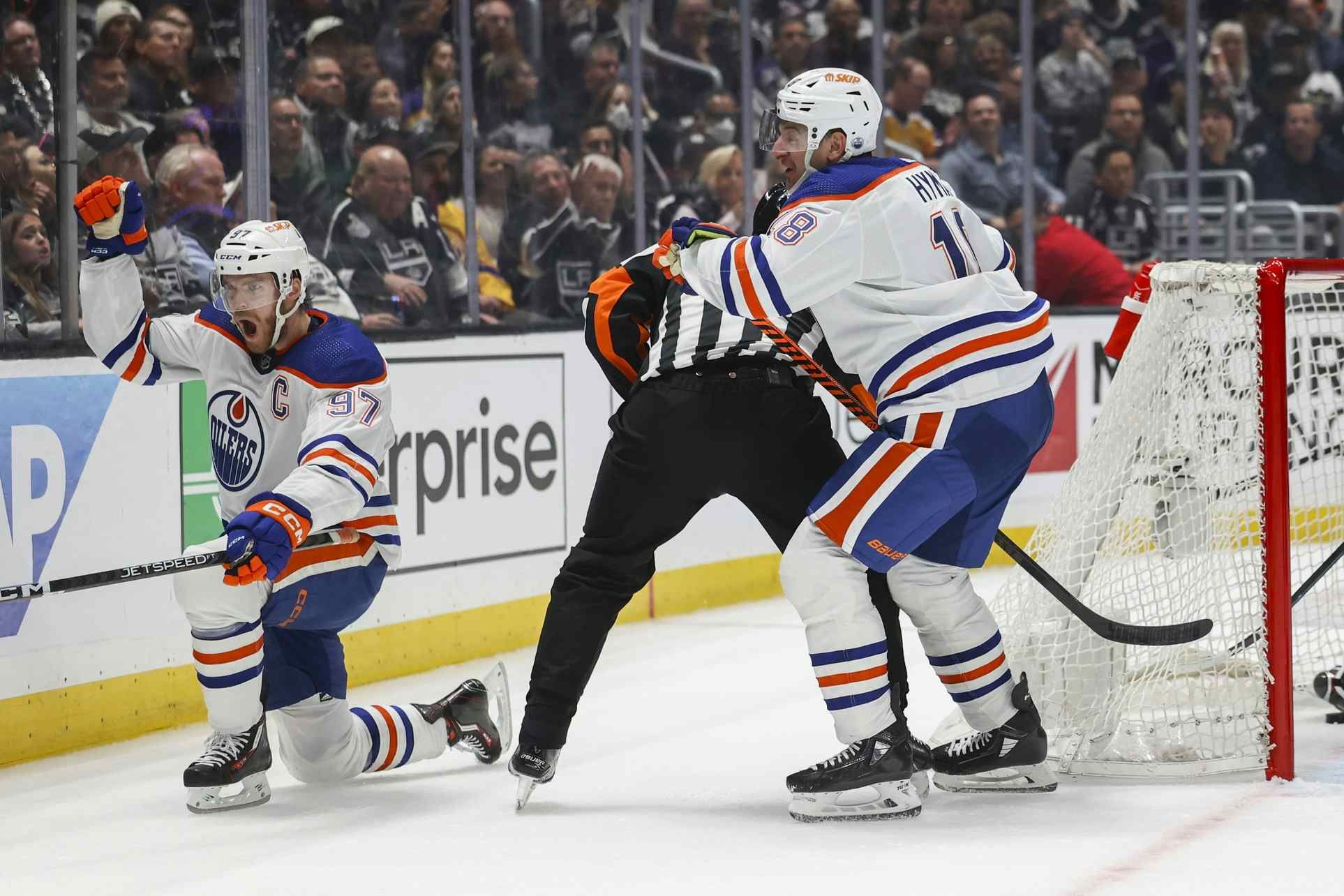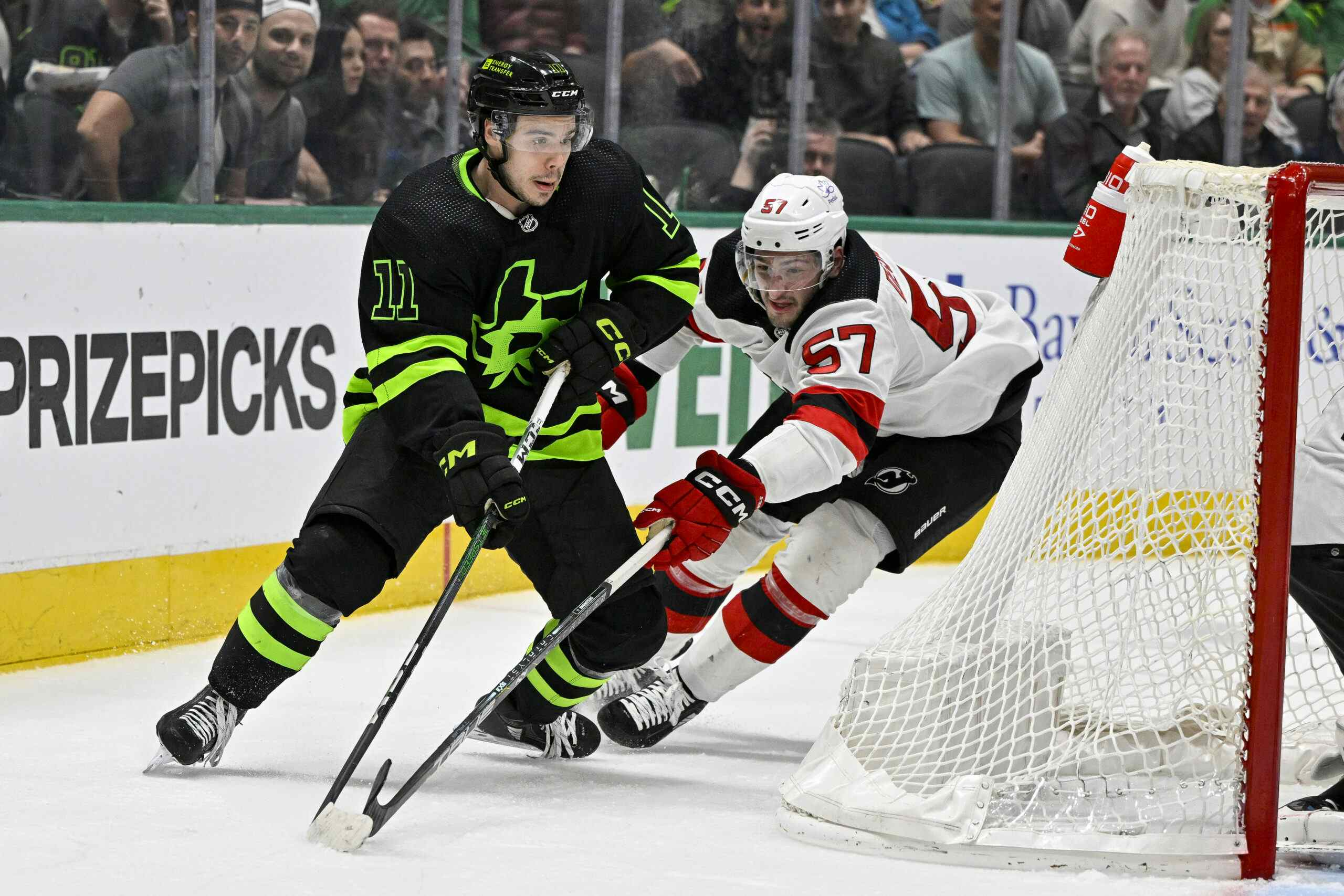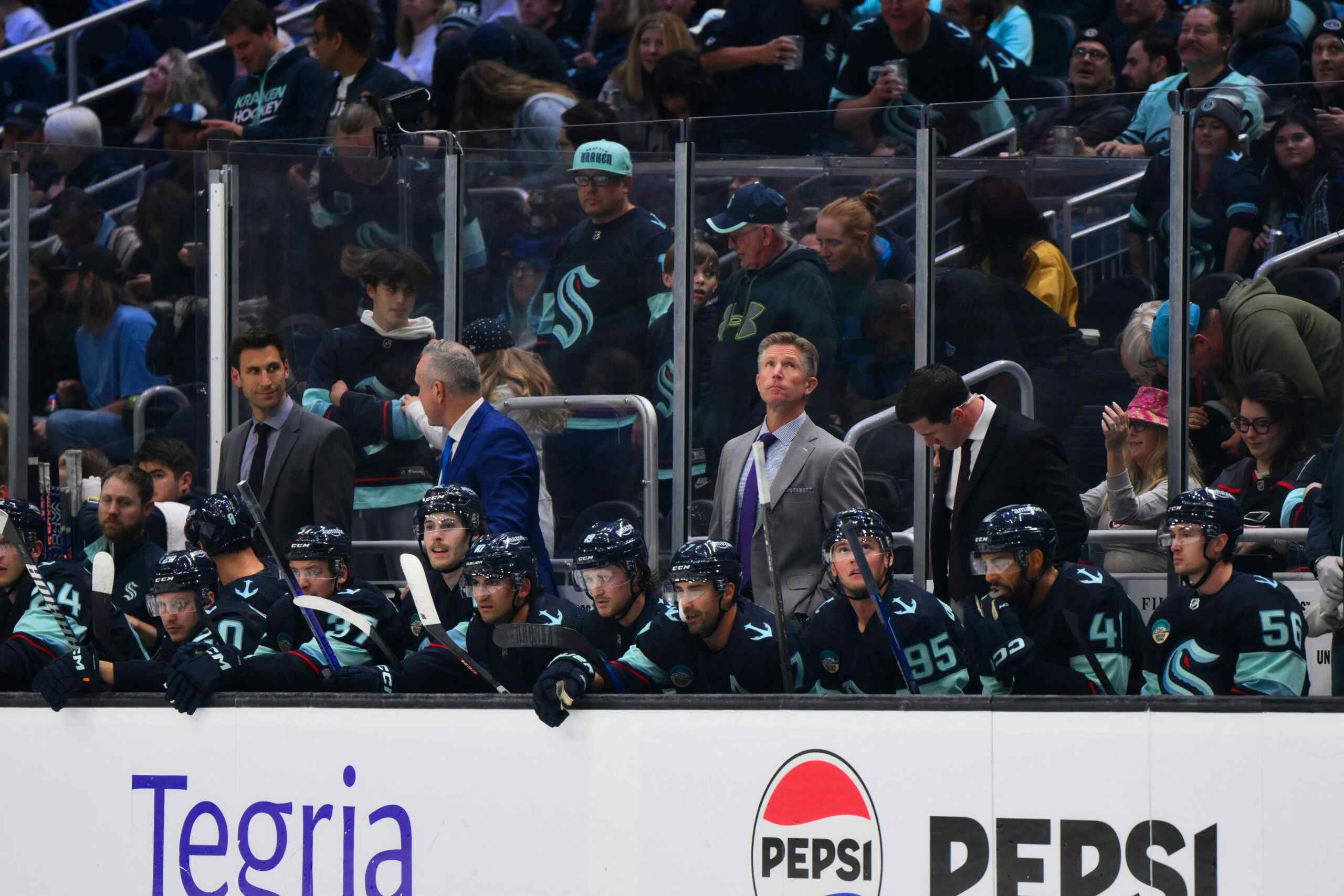Which teams did the Oilers’ Kid Line play well against?

Were there specific teams this season that the Oilers’ exceptional trio of Taylor Hall, Ryan Nugent-Hopkins and Jordan Eberle struggled against or lit up? If so, is there a common trend in those teams – did bigger teams or faster teams, or particular matchups make the difference?
The Scoring Chances
| Team | SC+ | SC- | SC% | Points |
|---|---|---|---|---|
| Anaheim | 18 | 18 | 50.0% | 66 |
| Calgary | 30 | 18 | 62.5% | 42 |
| Chicago | 5 | 21 | 19.2% | 77 |
| Colorado | 42 | 24 | 63.6% | 39 |
| Columbus | 10 | 12 | 45.5% | 55 |
| Dallas | 20 | 14 | 58.8% | 48 |
| Detroit | 14 | 14 | 50.0% | 56 |
| Los Angeles | 14 | 18 | 43.8% | 59 |
| Minnesota | 22 | 21 | 51.2% | 55 |
| Nashville | 10 | 12 | 45.5% | 41 |
| Phoenix | 16 | 23 | 41.0% | 51 |
| San Jose | 22 | 15 | 59.5% | 57 |
| St. Louis | 17 | 16 | 51.5% | 60 |
| Vancouver | 33 | 20 | 62.3% | 59 |
The above are the Oilers’ scoring chances with Jordan Eberle on the ice at even-strength this year. I’ve used Eberle because he a) played all 48 games and b) spent most of the season playing with Nugent-Hopkins, Hall or both.
For the most part, there aren’t a lot of surprises here – Eberle et al. did well against bad teams and less well against good teams. Some notes on the data:
The numbers against Chicago are flat-out bad, but there are some good reasons for that. The Oilers’ first game against the Blackhawks was the second game of Taylor Hall’s suspension; the team was out-chanced 23-5 at even-strength (with Eberle, Nugent-Hopkins and Ryan Smyth out-chanced 9-1 as a line, Eberle 10-1 overall) but salvaged a point thanks to special teams and Nikolai Khabibulin. The second game saw the kids split up; Hall played with Horcoff and Hemsky (they won the chances battle 6-5 against both the Toews and Kane lines) while Eberle played with Nugent-Hopkins and Hartikainen (they lost the chances battle 5-2, mostly against Toews). The third game Hall and Eberle played together (centered by Sam Gagner); the whole team was pasted and the top line lost the chances battle 6-2 to Toews and company.
One of the big reasons I wanted to look at this was to see how the Oilers’ young guns performed against the big teams in the West. According to James Mirtle, the Sharks, Kings, Avalanche, Blues and Predators were the five biggest teams in the West this year; they’re also the five teams with an average weight advantage of 1.5 pounds or more on the Oilers. The Oilers’ young guns struggled against L.A. (no surprise, they’re a very good team, particularly in terms of generating shots at even-strength), fared relatively poorly against Nashville, did pretty well against St. Louis, surprisingly well against San Jose and extremely well against Colorado. For the Eberle, Hall, Nugent-Hopkins trio at least, their reputed inability to play against size seems at odds with reality.
Let’s focus in more on St. Louis, because that team hits the midpoint performance-wise of our five big teams, and look at the matchups in more depth. In the first game between the two teams, Taylor Hall left early with a leg injury, and was replaced on the top line by Nail Yakupov. With either player, the Oilers won the matchup, largely against the Backes/Oshie/Schwartz trio (the Blues won the game thanks mostly to a much better performance from their depth vs. Edmonton’s depth). The second game, a 3-0 St. Louis win, is the one most people remember – the Blues dominated the Oilers (18-6 in even-strength scoring chances). Interestingly, that was one of the games where the Oilers had split up the kids – Hall, Horcoff and Hemsky lost their matchup, while Eberle, Paajarvi and Gagner lost theirs (Nugent-Hopkins was out with illness). The third meeting saw the Oilers win 3-0, with the kids performing well (as a line, outchancing St. Louis 8-4) in a game where the Oilers were heavily out-shot but only slightly out-chanced – the kids did their part, but the Sam Gagner-centered second line was crushed.
Overall, the correlation between average team weight and scoring chances is -0.145, meaning that the Oilers’ kid line fared slightly better against smaller teams than big teams. However, this year there was also a slightly larger correlation between point totals and average weight (0.211) so there is no reason to believe this is a result of the kids’ playing badly against size so much as it is a function of them playing worse against better teams. The correlation between a team’s points and the kid line’s scoring chance percentage is -0.626, so it seems clear that how good the opposition team is far outweighs their size in terms of impact on the kids’ ability to generate scoring chances.
Bottom line: Based on this data, I see no reason to believe that the Hall, Eberle, Nugent-Hopkins trio is any less effective against big teams than they are against small teams. The Oilers’ problems lie elsewhere; this line was effective in 2013.
STREAKCRED
Sign up for StreakCred – the new playoff pool game from the Nation Network. For only $20 you can win solid prizes and a portion of the proceeds go to supporting the MS Bike Tour and the Edmonton Down Syndrome Society. Sign up here.
Recently around the Nation Network
- Canucks Army: Vancouver swept by San Jose
- Jets Nation: 2013 year-end awards – unsung hero
- Gregor: No more body contact in peewee hockey
- Strudwick: Puppet master
- Willis: Timeline
- Lowetide: Answer the phone
- Wanye: Yak wins nothing, Oilers Nation wins something
- Willis: No Yakupov?
- Follow Jonathan Willis on Twitter!
Recent articles from Jonathan Willis





